Zinnias On Repeat: 10 Glorious Cut-And-Come-Again Varieties For Endless Summer Bouquets
These zinnia varieties keep giving all summer, making them the perfect choice for dedicated cutting gardens – or just the occasional homegrown bouquet.
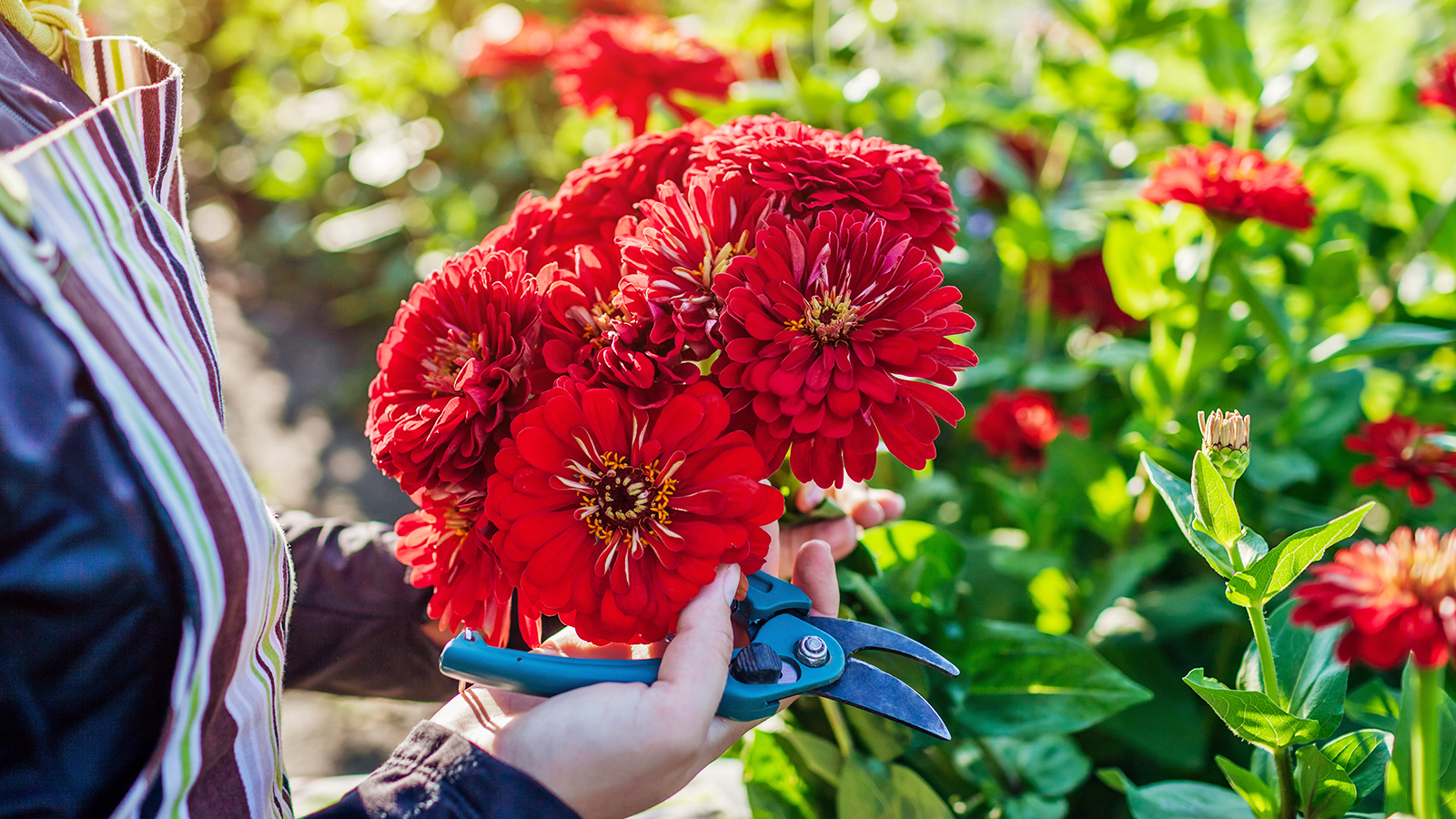

Laura Walters
There’s no happier flower in the cutting garden than the zinnia. In an array of colors, shapes, and sizes, these floral blooms spark smiles at first sight, adding pizzazz to cutting gardens and summer bouquets alike.
Zinnias are also one of the easiest ways to lure pollinators. Butterflies are especially attracted to these blooms, as are moths and bees. You may even spot hummingbirds hovering over them, too!
Growing zinnias will provide a steady supply of fresh flowers for arrangements as they bloom from summer well into fall. And best of all, frequent cutting encourages even more blooms to emerge. Add the fact that zinnias have reliably sturdy stems, and you have one of the best cut-and-come-again flowers to grow in your garden.
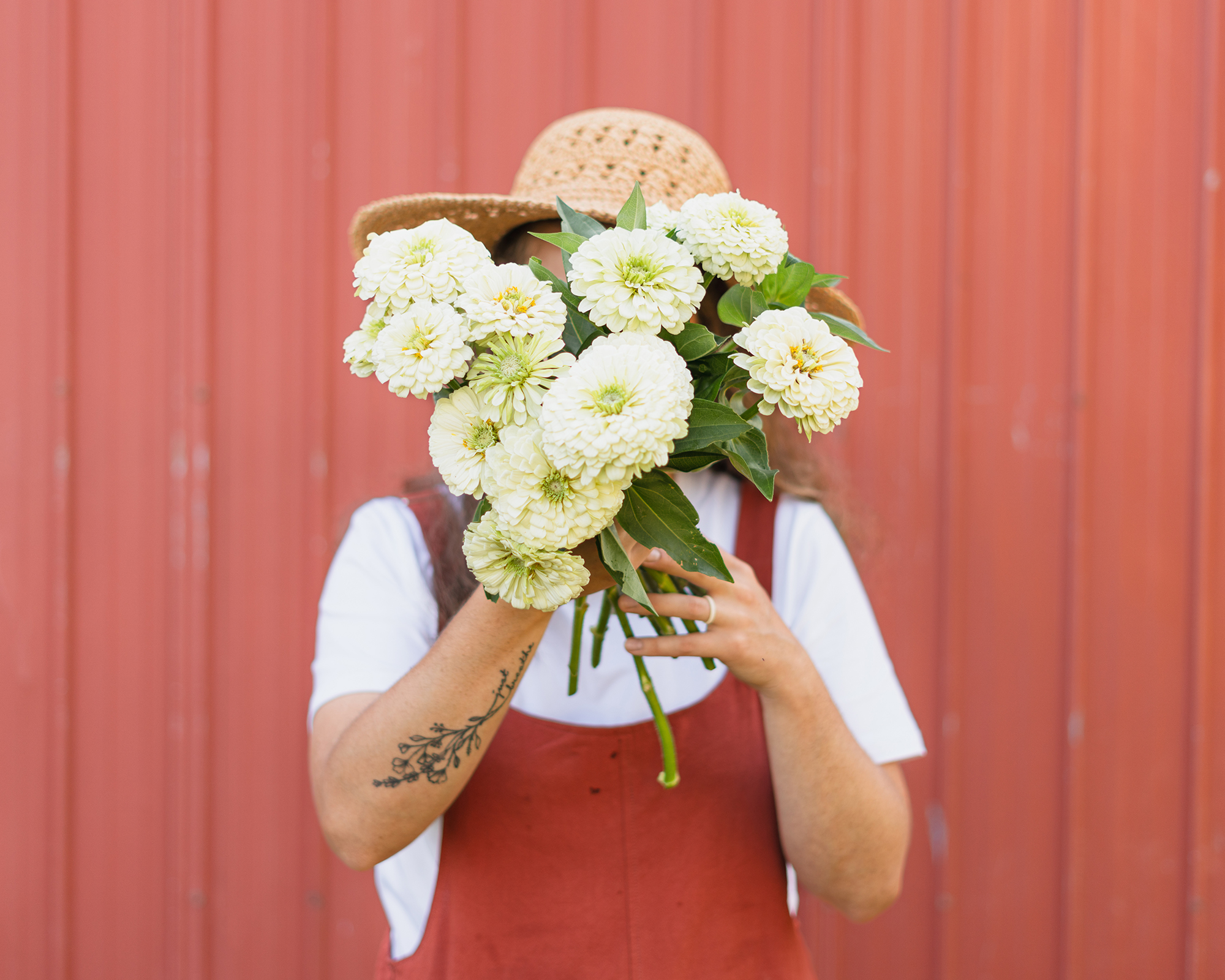
The Growing Basics
You can cost-effectively start zinnias from seeds by starting seeds indoors about four to five weeks before your region’s last frost date in spring. Or, direct sow seeds in well-draining garden soil in a sunny space once it’s warm. As they germinate, thin seedlings to ensure adequate air flow between plants.
Zinnias appreciate moderate moisture but allow the soil to dry between waterings. They can be prone to powdery mildew, so direct your hose or watering can at the plants’ base to avoid wetting the foliage and spreading disease. Light feeding with a well-balanced fertilizer every six weeks is just enough to ensure constant blooms without overfeeding.
Harvesting Zinnias for Floral Arrangements
Zinnias must be harvested when they are fully unfurled as they stop opening once cut. Before cutting, hold the stem 6 to 8 inches (15 to 20cm) below the flower and give it a shake. If it wobbles, it’s not ready for harvest. If it’s stiff, follow that stem downward to where it meets a branching point. Cut here at a diagonal to stimulate growth in the emerging branches.
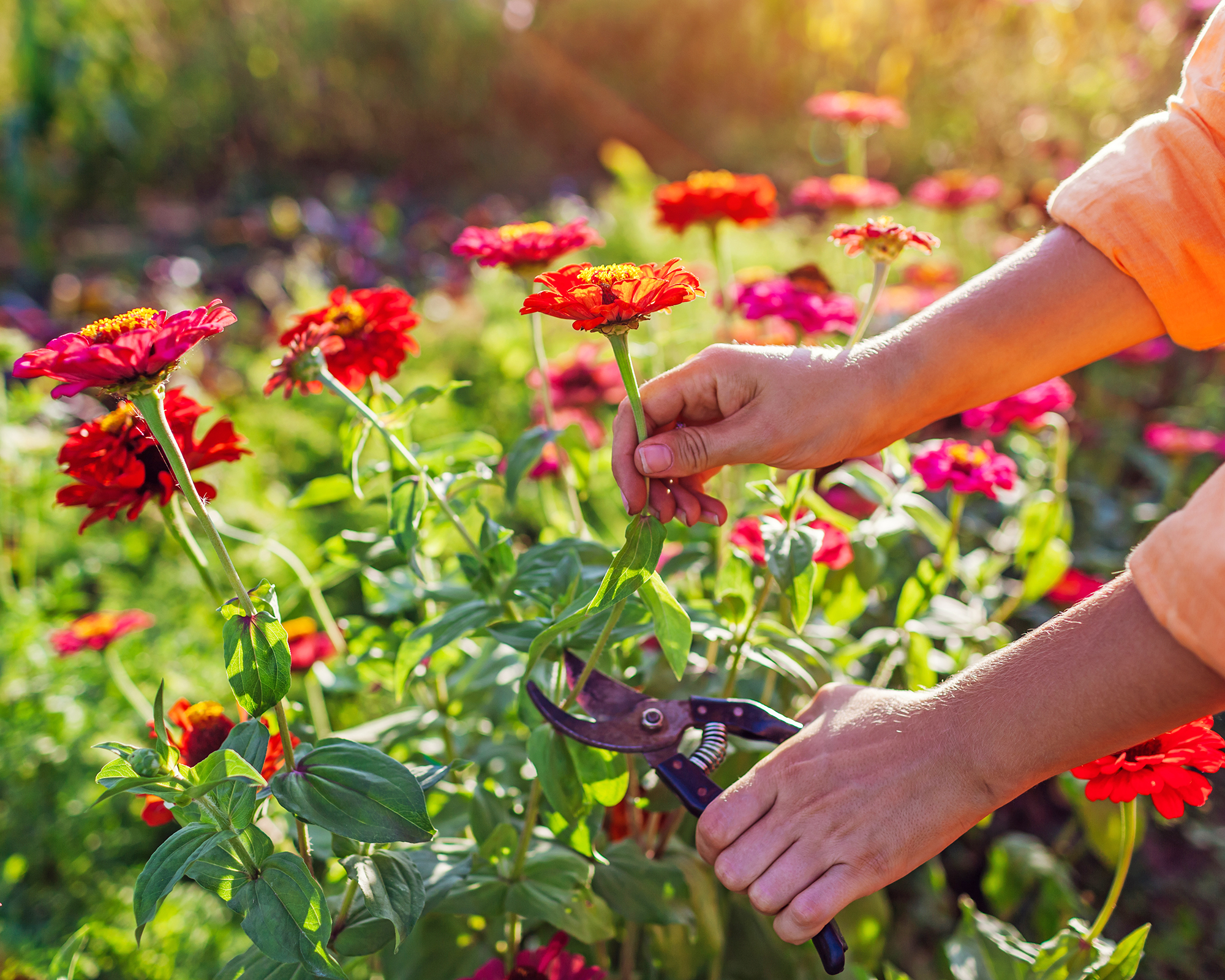
Extending Vase Life
For the longest vase life possible, remove any foliage that sits below the water line to prevent bloom-shortening bacterial growth. Change the water daily and trim stem ends every few days to extend the vase life. Add a commercial floral food to keep zinnias looking fresh for up to a week.
Gardening tips, videos, info and more delivered right to your inbox!
Sign up for the Gardening Know How newsletter today and receive a free copy of our e-book "How to Grow Delicious Tomatoes".
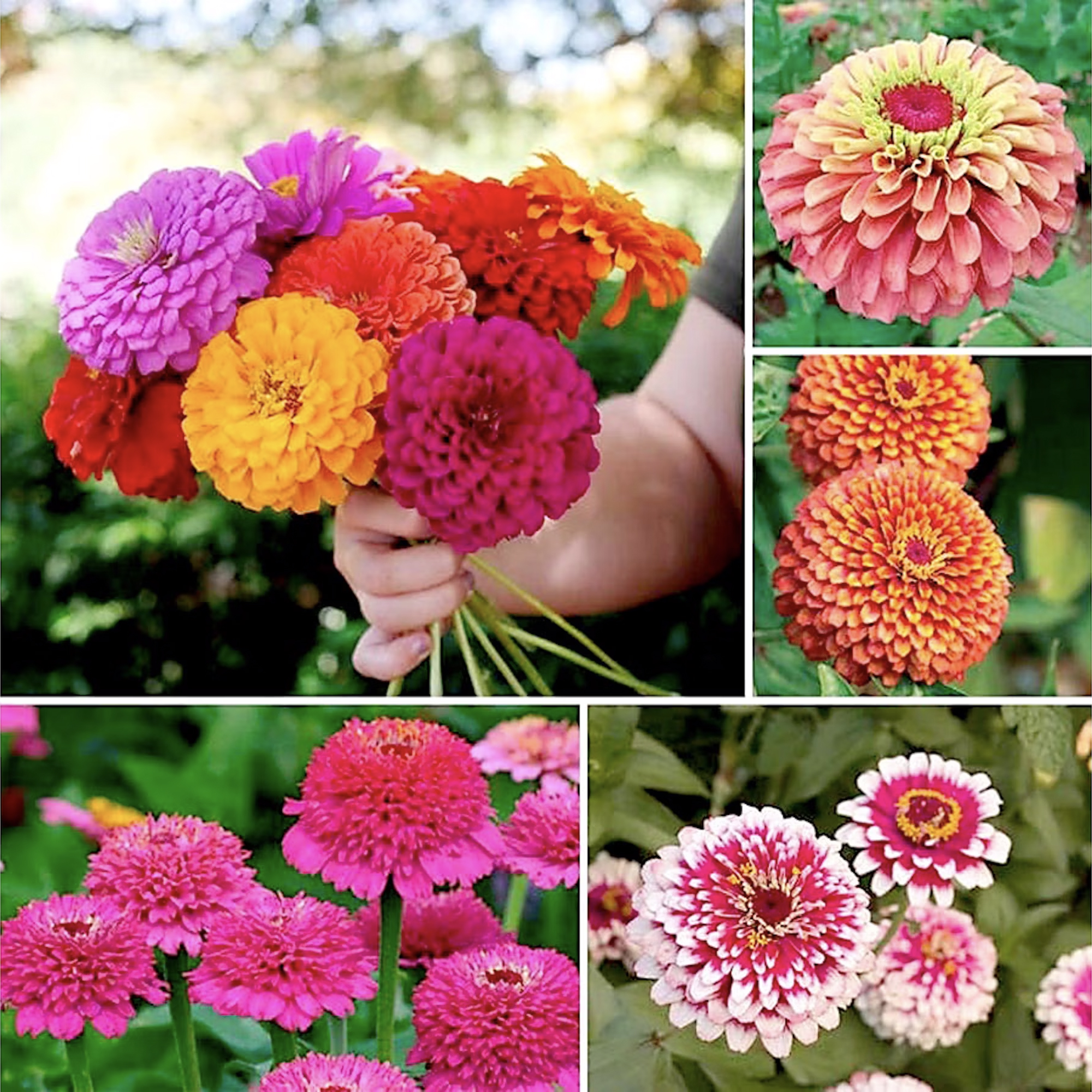
Our Zinnias for Cutting Seed Collection contains a vibrant rainbow mix to get you on your way to creating a glorious zinnia cut flower garden from seed.
Best Cut-Flower Zinnias to Grow
Zinnia varieties number in the hundreds, so we’ve chosen 10 that are tried and true for your cutting garden. There are a few old classics, some fun bicolors, and a variety that’s best for the little hands around the house.
1. Queeny Lime Red
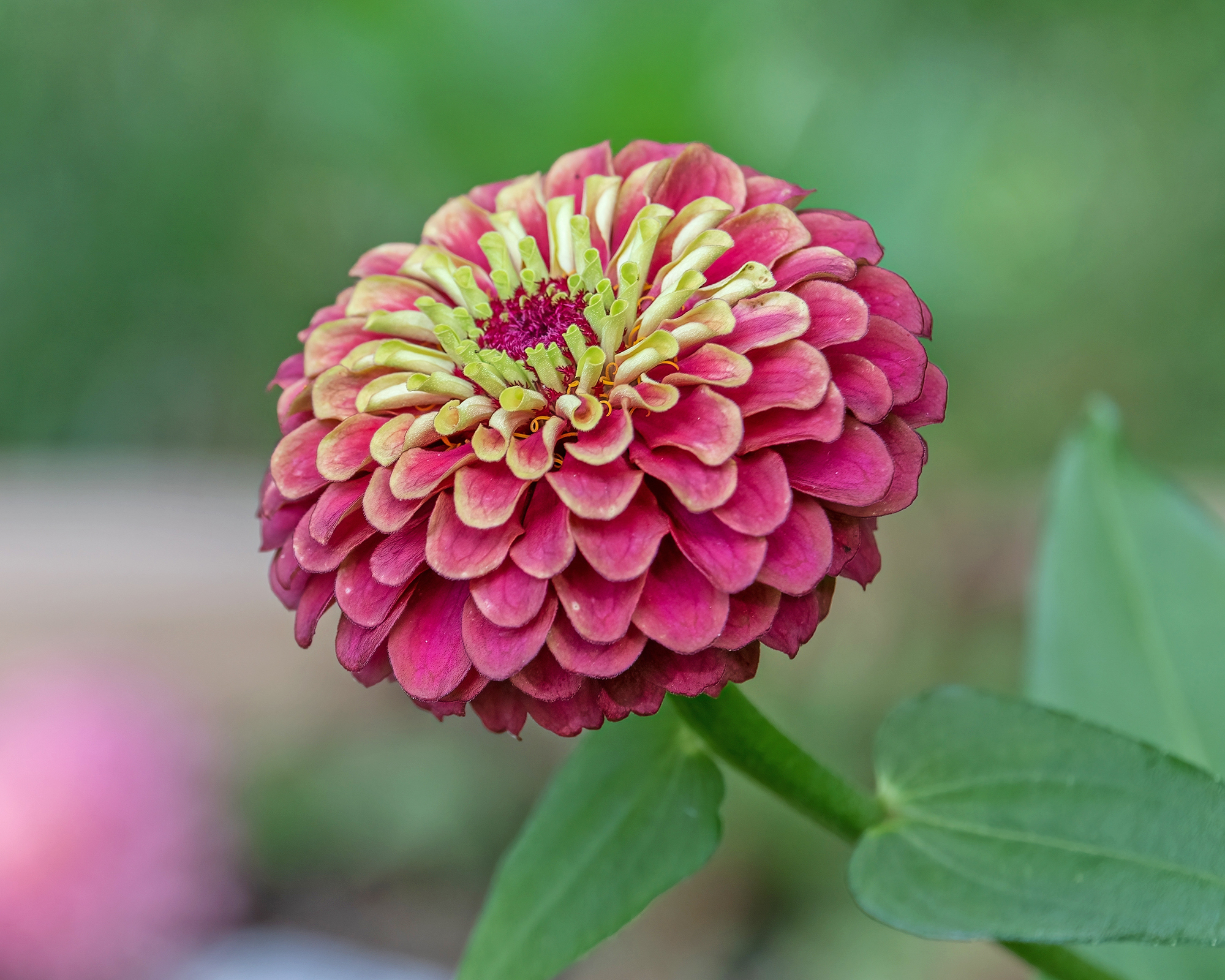
This variety’s fully double blooms look “antiqued” thanks to its petals transitioning from deep burgundy in the outer rings to soft lime in the center. If your aesthetic is vintage, then ‘Queeny Lime Red’ will give you muted tones to add to your floral arrangements. Flowers are up to 3.5 inches (9cm) wide, and the plant grows to 40 inches (1m) tall. ‘Queeny Lime Red’ is a standout in our Zinnias for Cutting Seed Collection, available in the Shop.
2. Benary’s Giant Mix
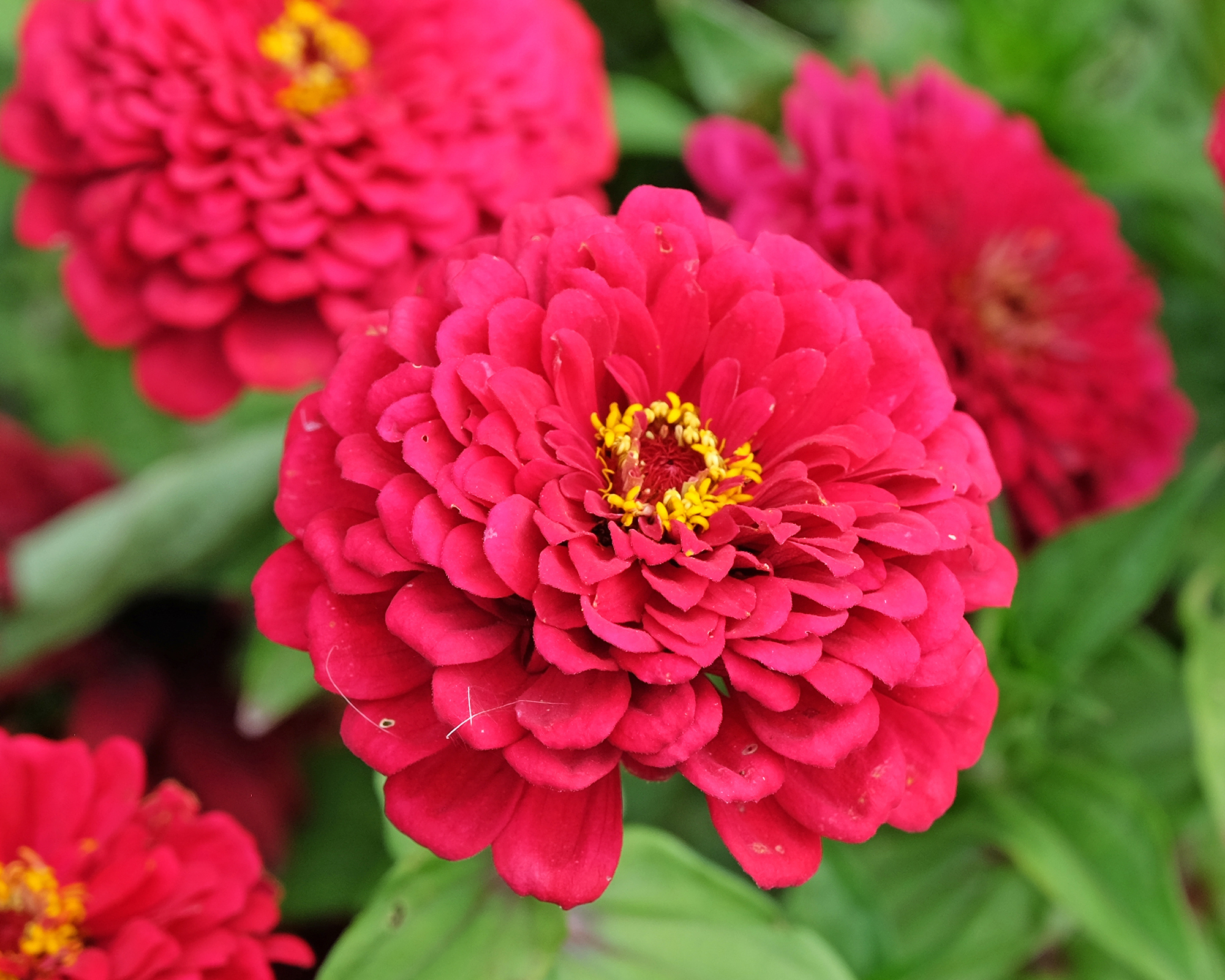
One of the most popular zinnia mixes out there, ‘Benary’s Giant Mix’ produces incredibly large (4 to 6 inch/10 to 15cm diameter) blooms in bright, basic colors such as white, oranges, yellows, purples, and reds. Growing up to 4 feet (120cm), the ‘Giants’ were bred for beauty and disease tolerance. Their long, thick stems are perfect for keeping those big blooms from nodding in a vase.
3. Zinderella Purple
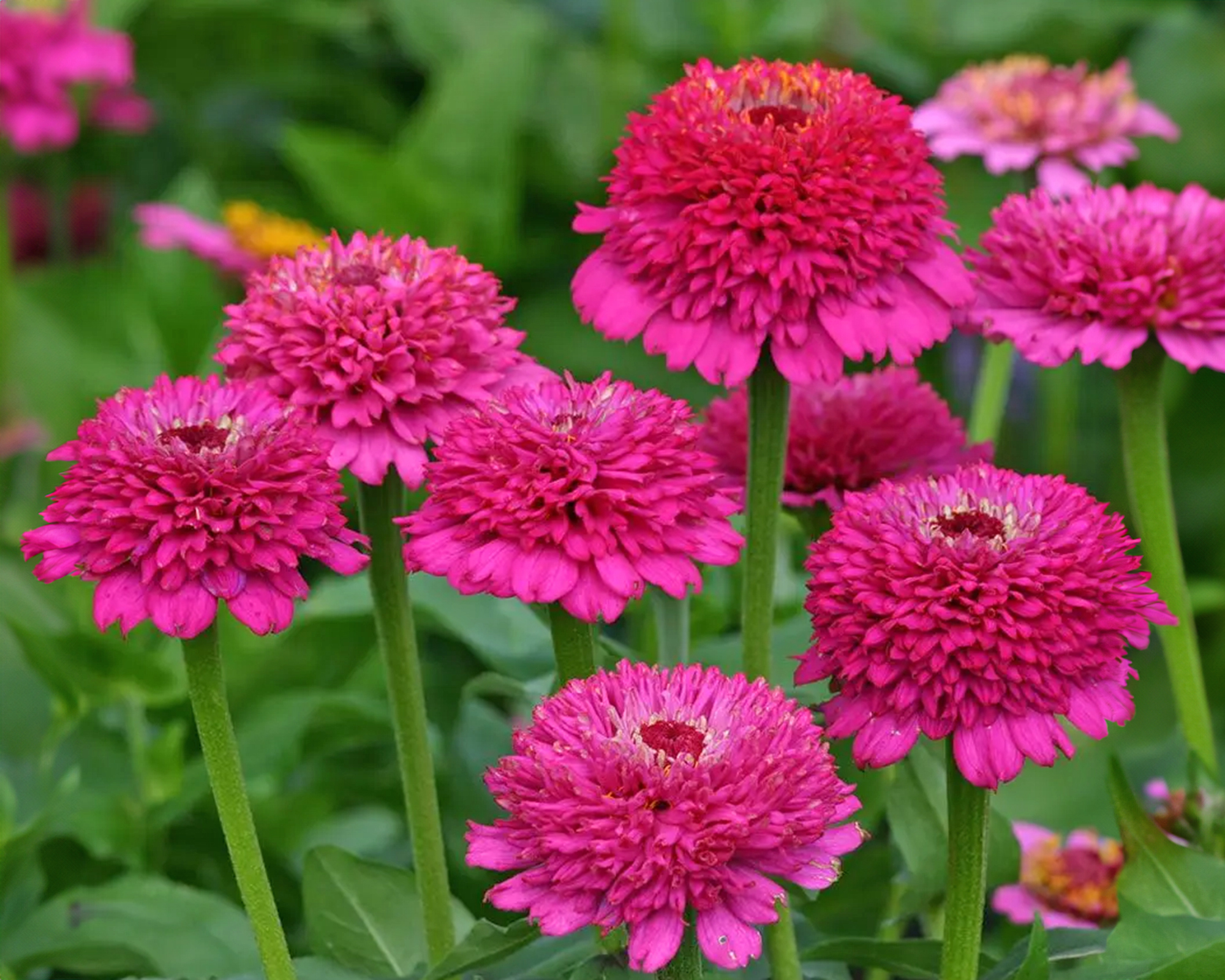
While it may look like a pincushion or scabiosa flower, the mesmerizing fuchsia-lilac ‘Zinderella Purple’ is all zinnia! Its softly ruffled blooms keep you guessing because they vary from semi to fully double, depending on the difference between day and night temperatures. Flowers are 2.5 inches (6cm) wide atop a plant as tall as 30 inches (76cm). Find ‘Zinderella Purple’ in our Zinnias for Cutting Seed Collection.
4. Cut and Come Again
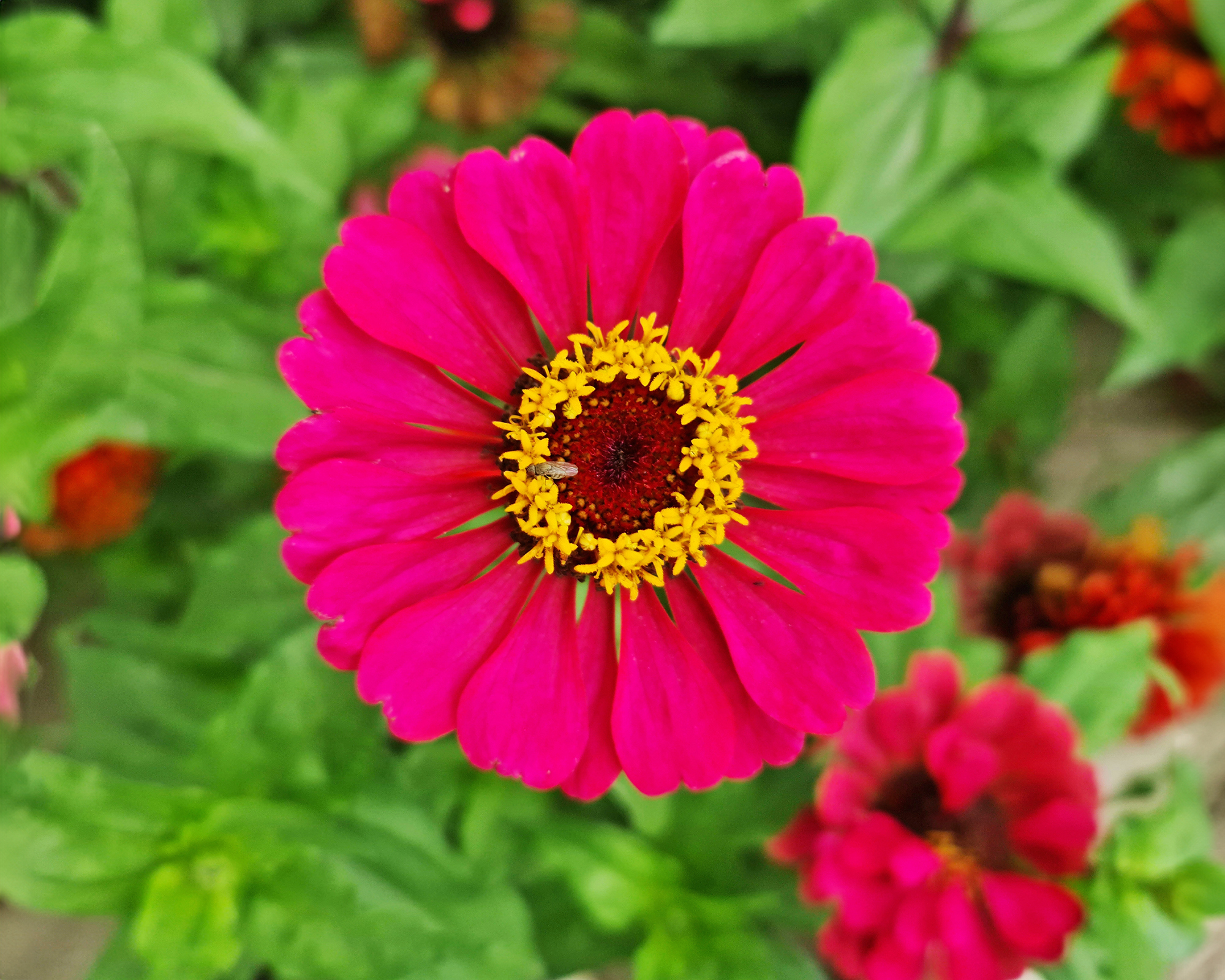
A highly prolific bloomer, 'Cut and Come Again' – or Zinnia pumila – produces flowers at a rapid rate all season long. It’s one of the classic cut-flower zinnias, and one that offers vibrant shades of red, orange, yellow, and pink.
The 3.5-foot-tall (1m) plants produce blooms that are 2 to 3 inches (5 to 7.5cm) across and appear as singles, doubles, and semi-doubles.
5. Crouching Tiger
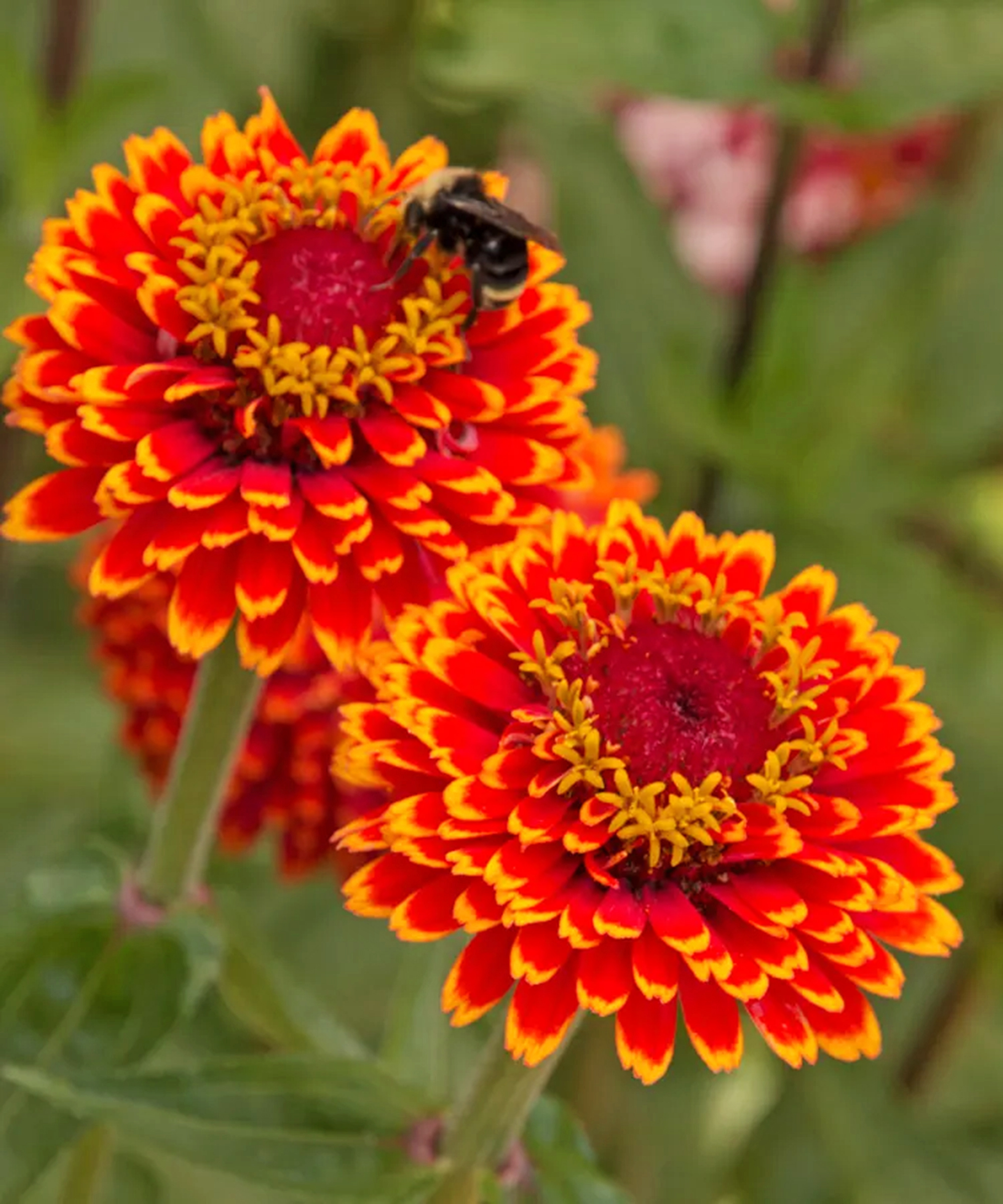
There is so much beauty in this red-and-yellow double-flowered bicolor! The 3-inch (7.5cm) flowers have petals that are deep red at the base and tipped in yellow. Younger flowers are fully bicolor, but as the blooms plump to their fully double status, only bits of red are visible among the yellow tips. You’ll have a mix of single to semi to fully double blooms at any given moment on the same 2-foot-tall (60cm) plant.
Winner of the 2015 Fleuroselect Novelty Award, Europe’s highest honor for flowers from seed, ‘Crouching Tiger’ is one of the varieties featured in our Zinnias for Cutting Seed Collection.
6. Hidden Dragon

Everything that was said about ‘Crouching Tiger’ can be said for ‘Hidden Dragon’ – except for the color, that is. ‘Hidden Dragon’ sports deep red petals at their base, as ‘Crouching Tiger’ does, but its tips are white. Combine the two varieties, and you have a stunning floral composition. It's also included in our Zinnias for Cutting Seed Collection.
7. State Fair Mix
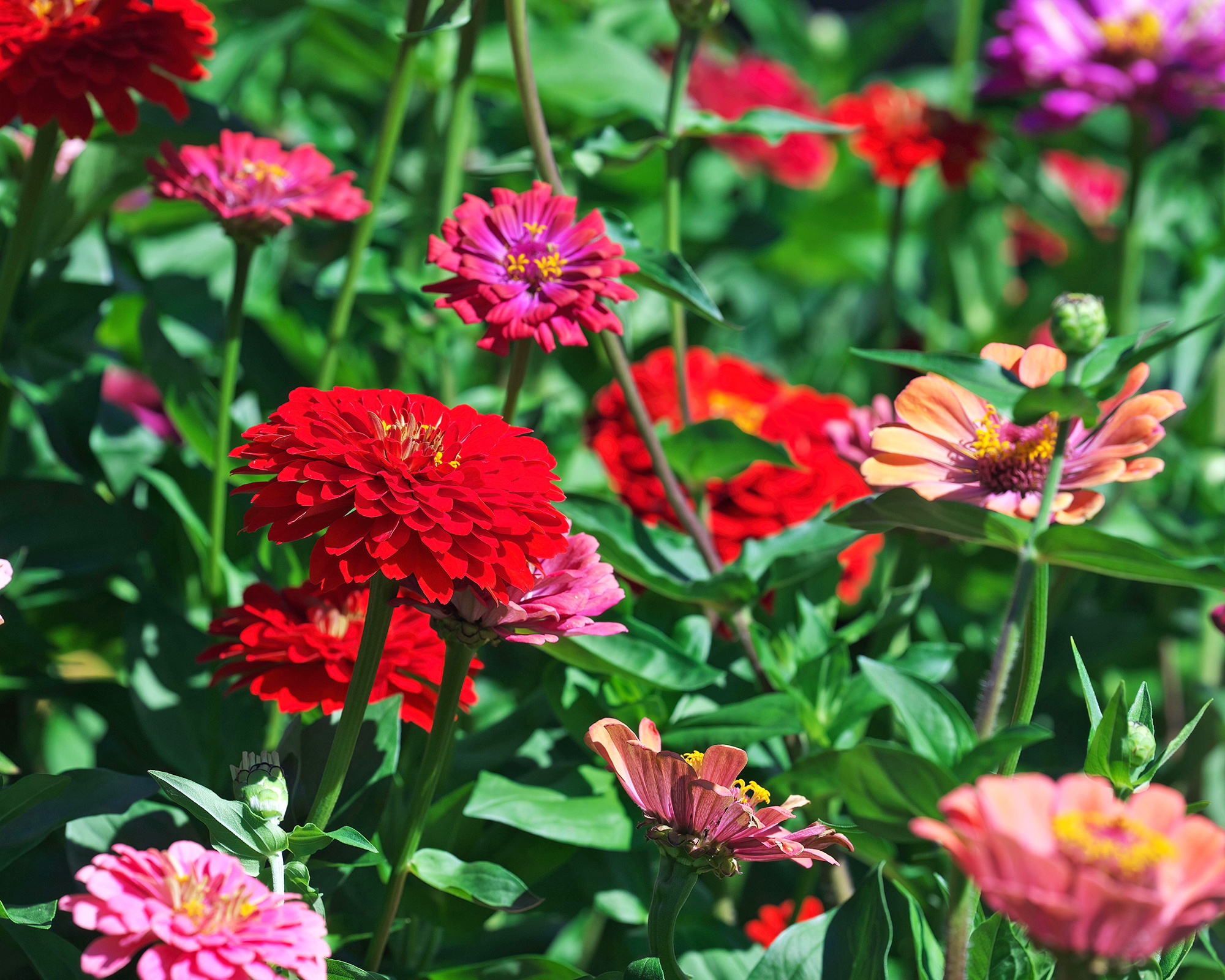
The ‘State Fair’ zinnias are some of the largest zinnias out there, with flowers up to 6 inches (15cm) in diameter. The mix offers a range of happy colors – orange, red, pink, purple, yellow, and white.
These zinnias thrive in hot weather, making them an excellent choice for summer cut flower bouquets. And at up to 48 inches (1.2m) tall, they offer plenty of lengthy stems well-suited for vases.
8. Purple Prince
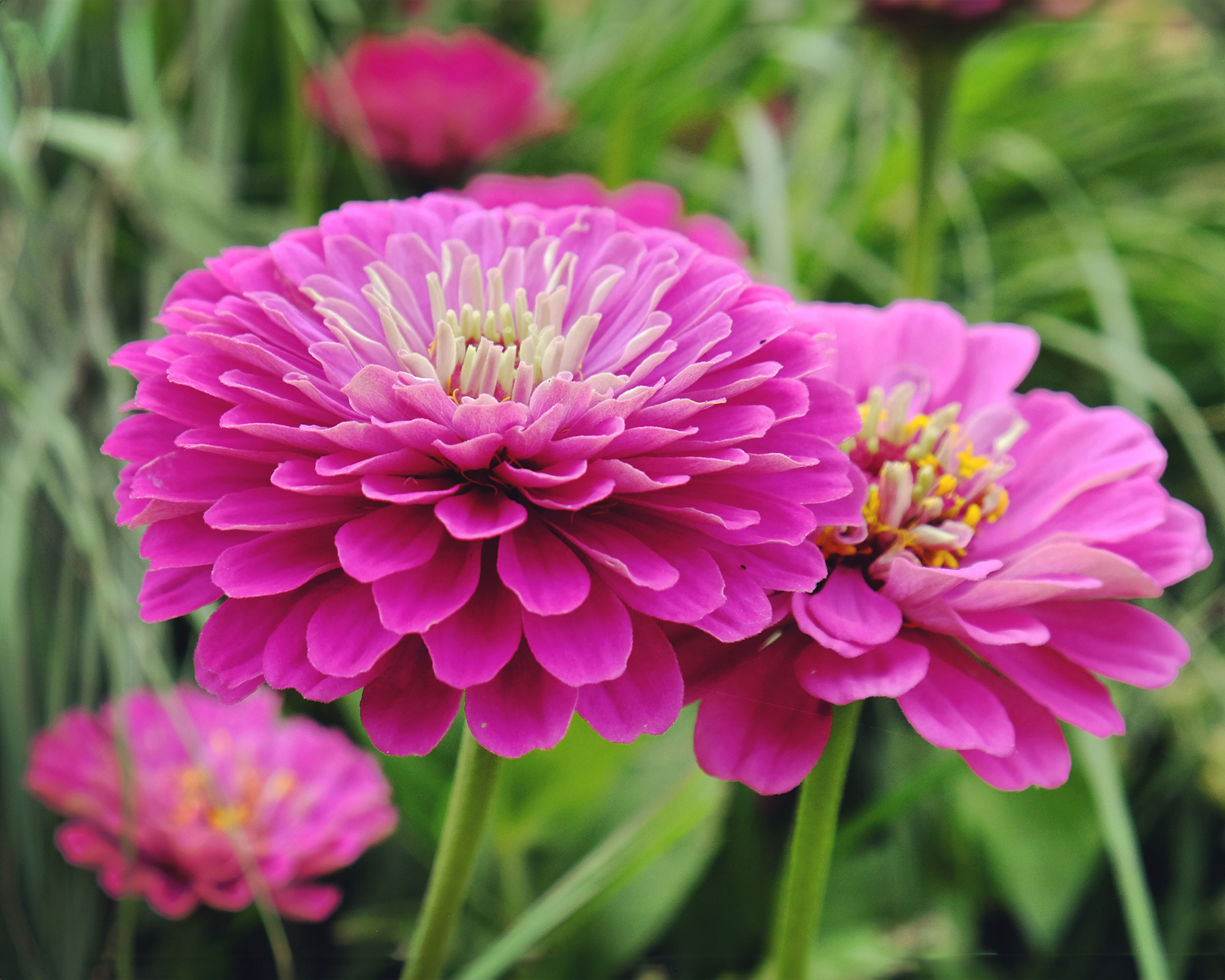
This variety’s rose-purple coloration is a vital grounding element in ethereal cut-flower bouquets. ‘Purple Prince’ is known for its semi- to double-flowered massive blooms, sturdy stems, and long vase life – characteristics that make it an outstanding element for floral arrangements. This is one of five varieties within our Zinnias for Cutting Seed Collection.
9. Whirligig Hybrid Zinnia
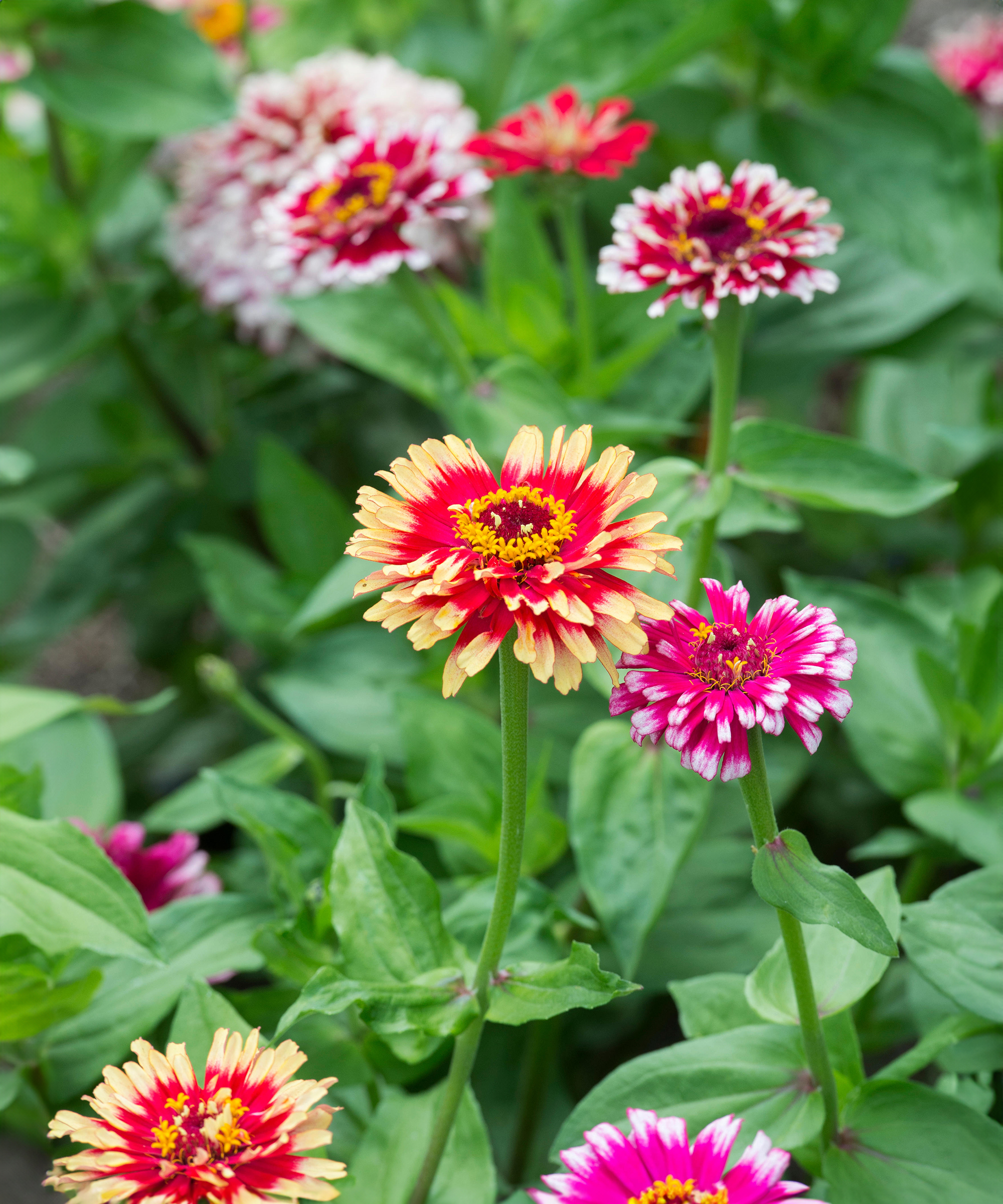
Looking for something special? Each ‘Whirligig’ bloom presents itself a little bit differently – some single, some daisy-like, and some fully double. Colors vary from flower to flower, too, many with contrasting petal tips and some solidly monochrome.
Flowers are medium-sized at 3 to 4 inches (8 to 10cm) across on plants less than 2 feet (60cm) tall. For a "surprise in every bloom", pick up Whirligig zinnia seeds in the Shop.
10. Profusion AAS Mix
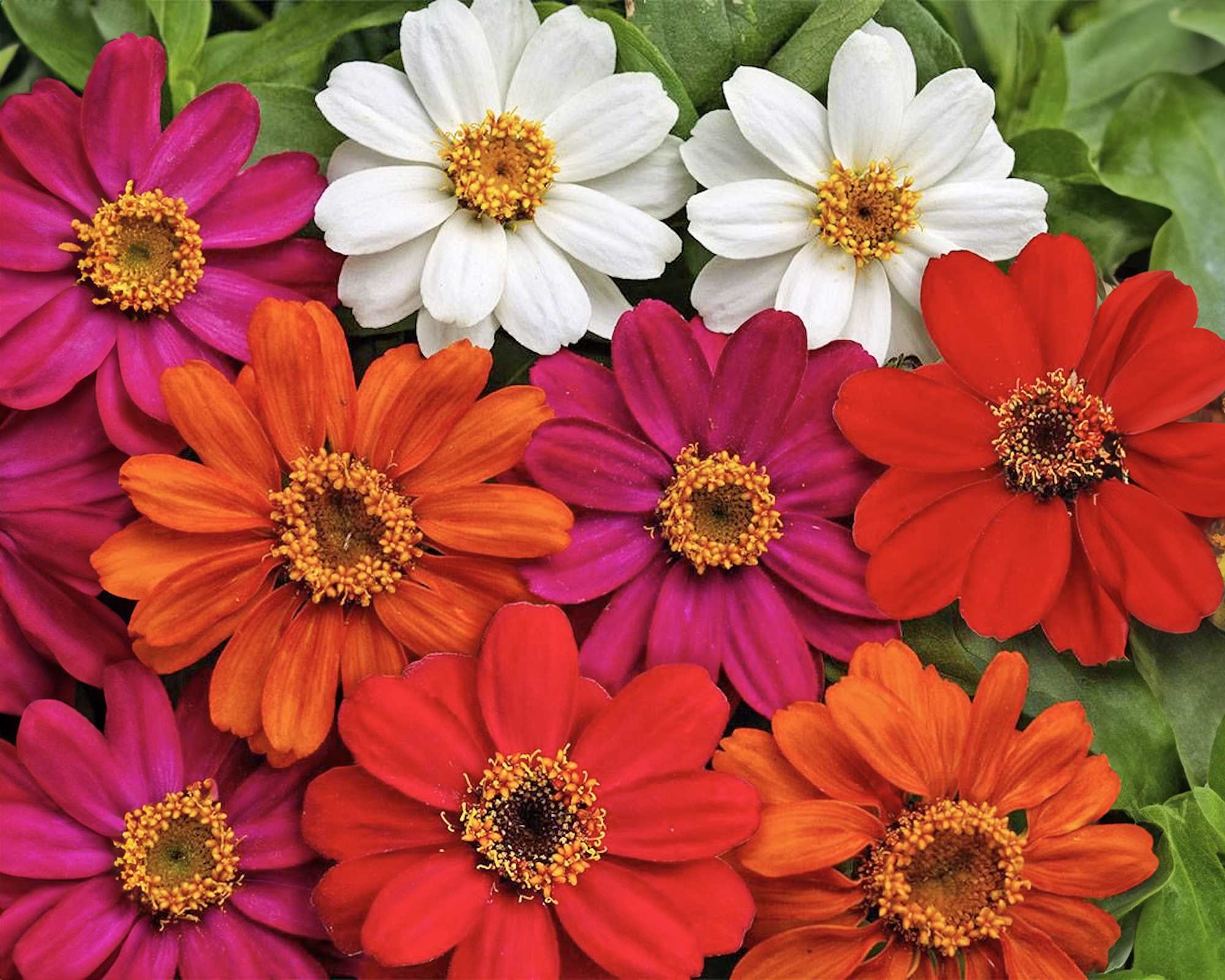
Not all cut flowers need to be tall and lanky. Profusion zinnias are outstanding garden plants, beautiful in beds but not a first thought for bouquets. However, with cheery 2-inch-wide (5cm) flowers and short stems, these are ideal for child-sized posies.
The ‘Profusion AAS Mix’ is a combination of four colors that won the coveted All-America Selections award for outstanding garden performance. Your kids will love the blooms! Find this award-winning zinnia mix in the Shop.
More Flower Growing Inspiration
- Try these cut flower garden ideas for beginners. Even newbies can grow these easy decorative floral plants.
- Browse flower seeds in the Gardening Know How Shop – including top-performing varieties and gorgeous collections.
- Be inspired by 8 self-sowing flowers that will grace your garden with colorful blooms year after year.
- Discover the best romantic old garden roses to grow for a dreamy display.
- Don't miss out on the latest gardening inspiration and exclusive offers – sign up to the Gardening Know How Newsletter.
This article features products available from third party vendors on the Gardening Know How Shop.

Ellen Wells is a horticultural communications consultant with 30 years of experience writing about all aspects of the gardening world.
She has worked for many of horticulture’s biggest brand names, writing blog posts, articles, press releases, and design and instructional pieces. Her previous roles include Senior Editor and Editor-at-Large for Ball Publishing.
Ellen is based in New England where she gardens in Zone 7a. She loves tending to flower-filled containers on the patio and puttering around her vegetable garden.
- Laura WaltersContent Editor
-
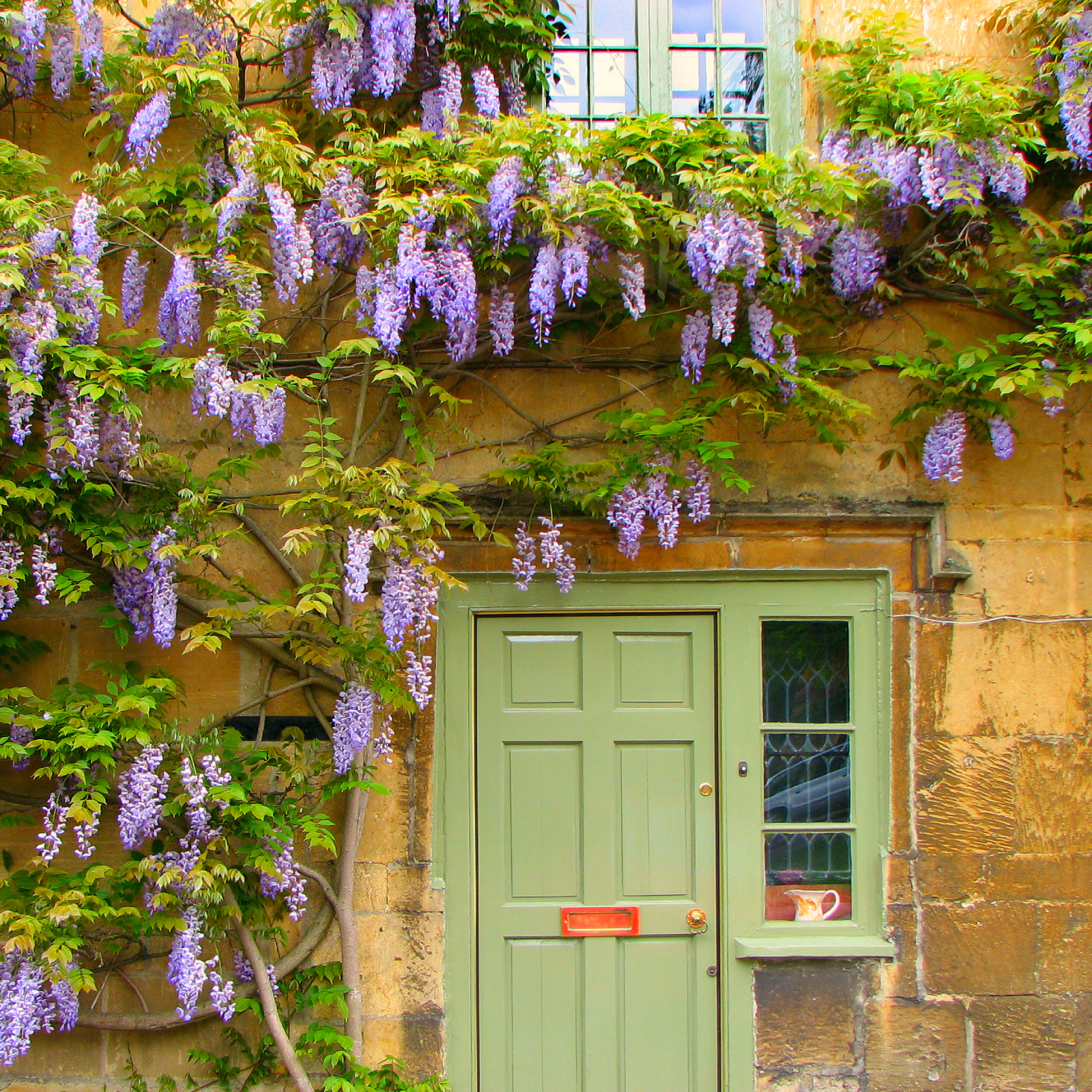 Create A Romantic Garden Straight Out Of Bridgerton: Regency Era Romance In Your Garden
Create A Romantic Garden Straight Out Of Bridgerton: Regency Era Romance In Your GardenTry some romantic garden ideas straight out of Bridgerton. Flowers and gardens in the Regency era were lush and charming and you can get the same look!
By Bonnie L. Grant
-
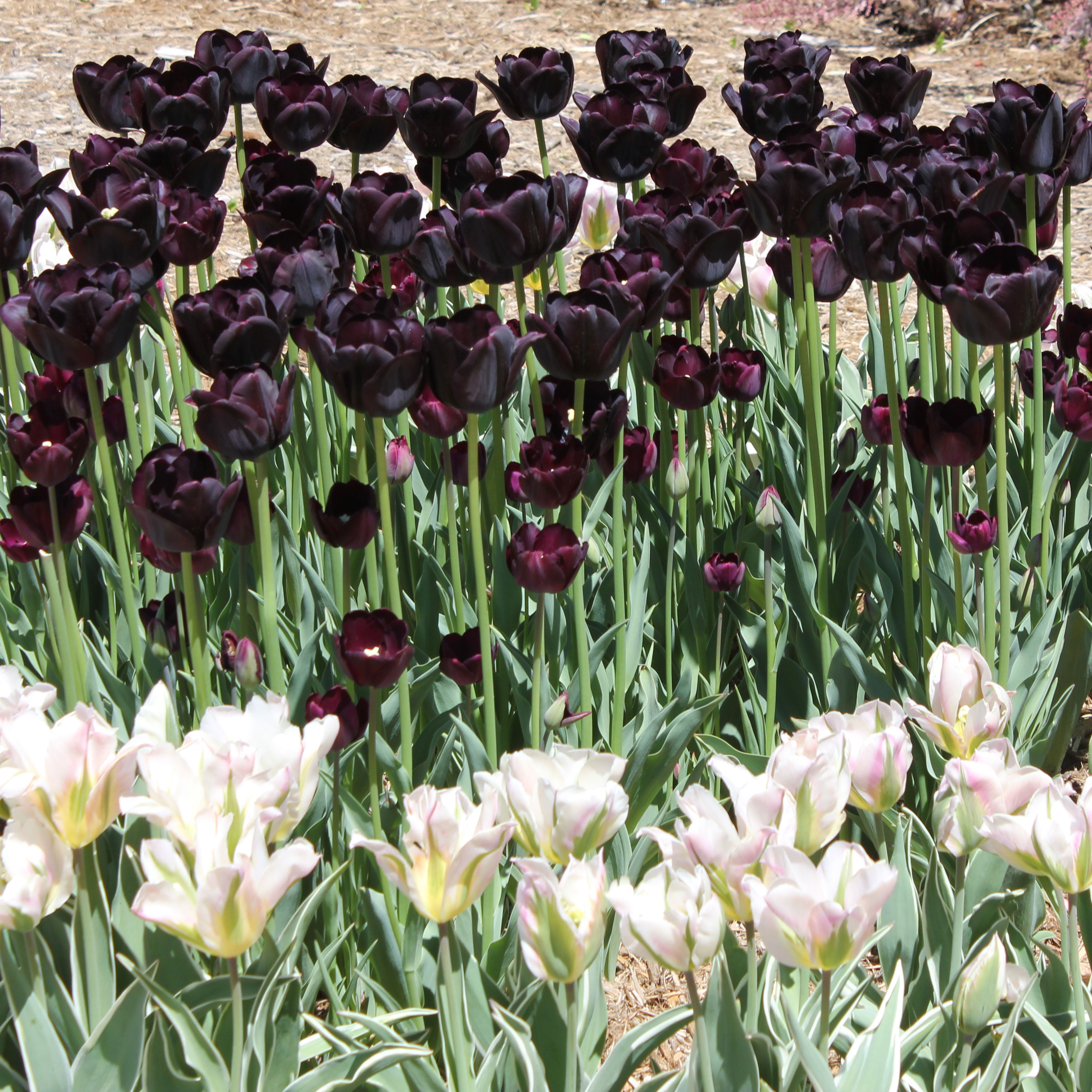 Moody Blooms For Spring: 8 Types Of Black Flowers To Add Drama To Spring Displays
Moody Blooms For Spring: 8 Types Of Black Flowers To Add Drama To Spring DisplaysFrom midnight burgundies to inky violets, several types of black flowers can enrich and embolden a spring display. Try these brooding bloomers for a moody garden
By Tonya Barnett
-
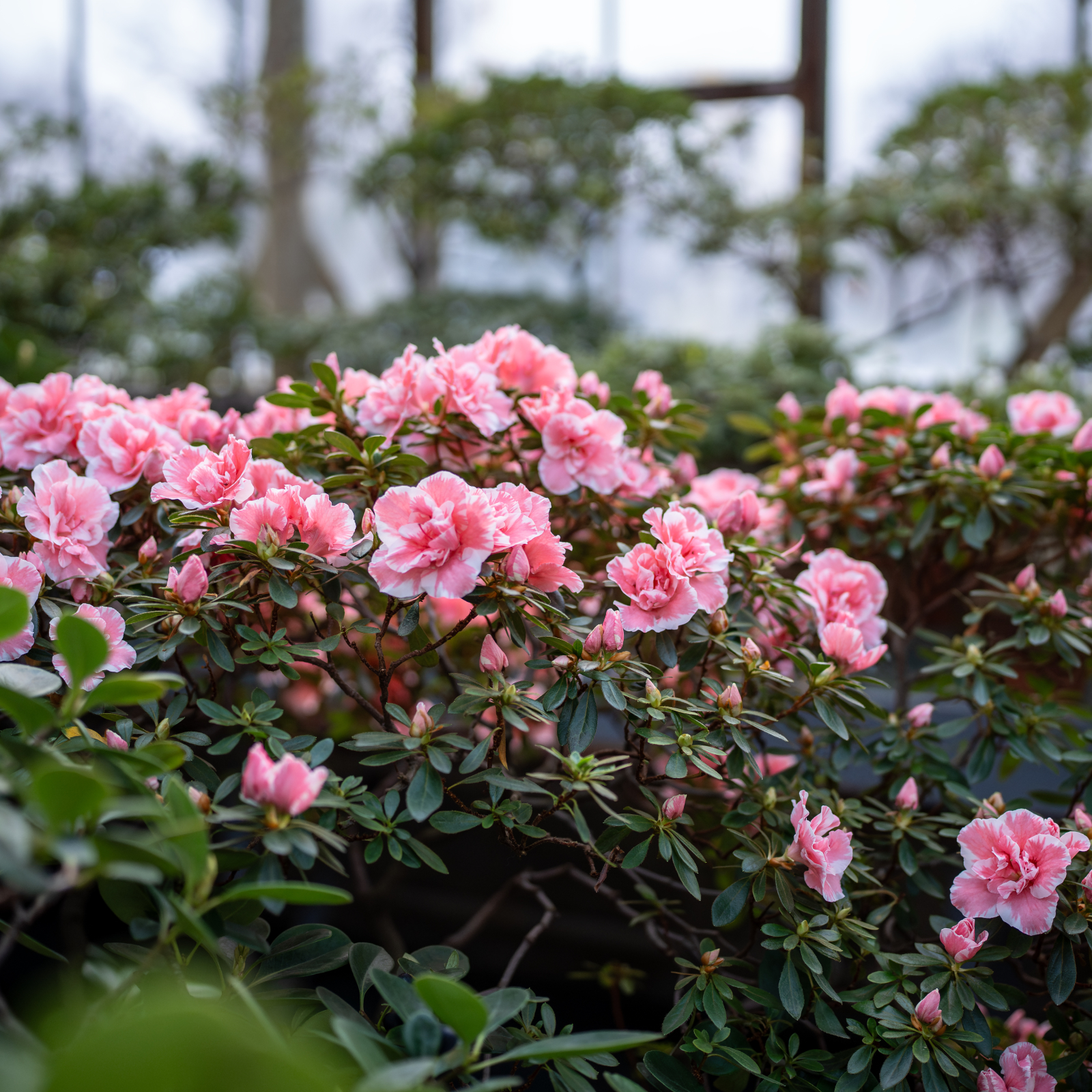 What Is The Size Of An Azalea? Explore Different Varieties That Will Suit Every Garden
What Is The Size Of An Azalea? Explore Different Varieties That Will Suit Every GardenThe size of azaleas can vary widely because they have been selectively bred for different landscape needs. Check out our picks for each size category.
By Mary Ellen Ellis
-
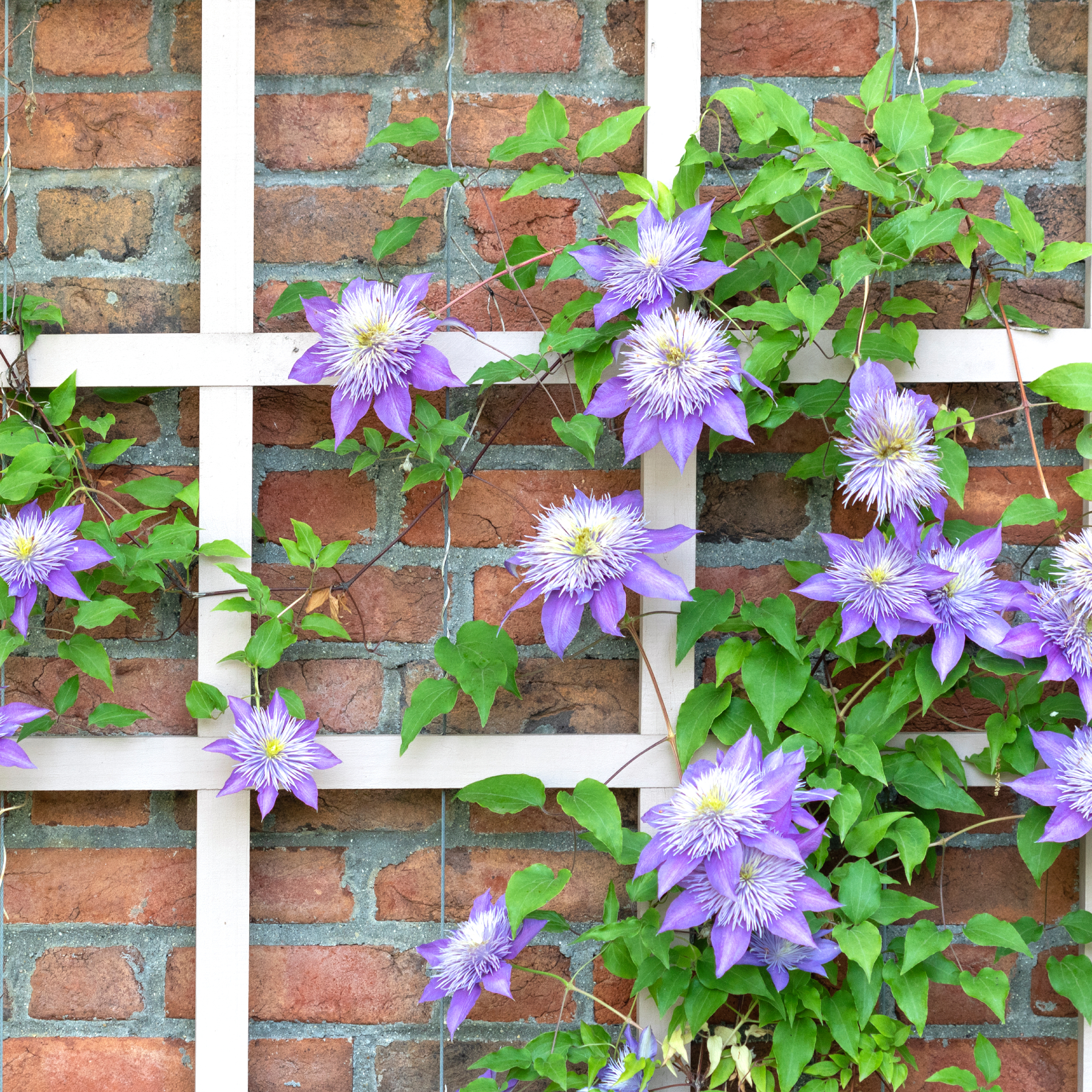 5 Fabulous Fast-Growing Vines – That Will Quickly Climb Any Arbor, Trellis, Or Fence
5 Fabulous Fast-Growing Vines – That Will Quickly Climb Any Arbor, Trellis, Or FenceThese fast growing vines are perfect for covering any eyesores in your yard or creating a living fence. They will provide great visual interest, as well.
By Amy Grant
-
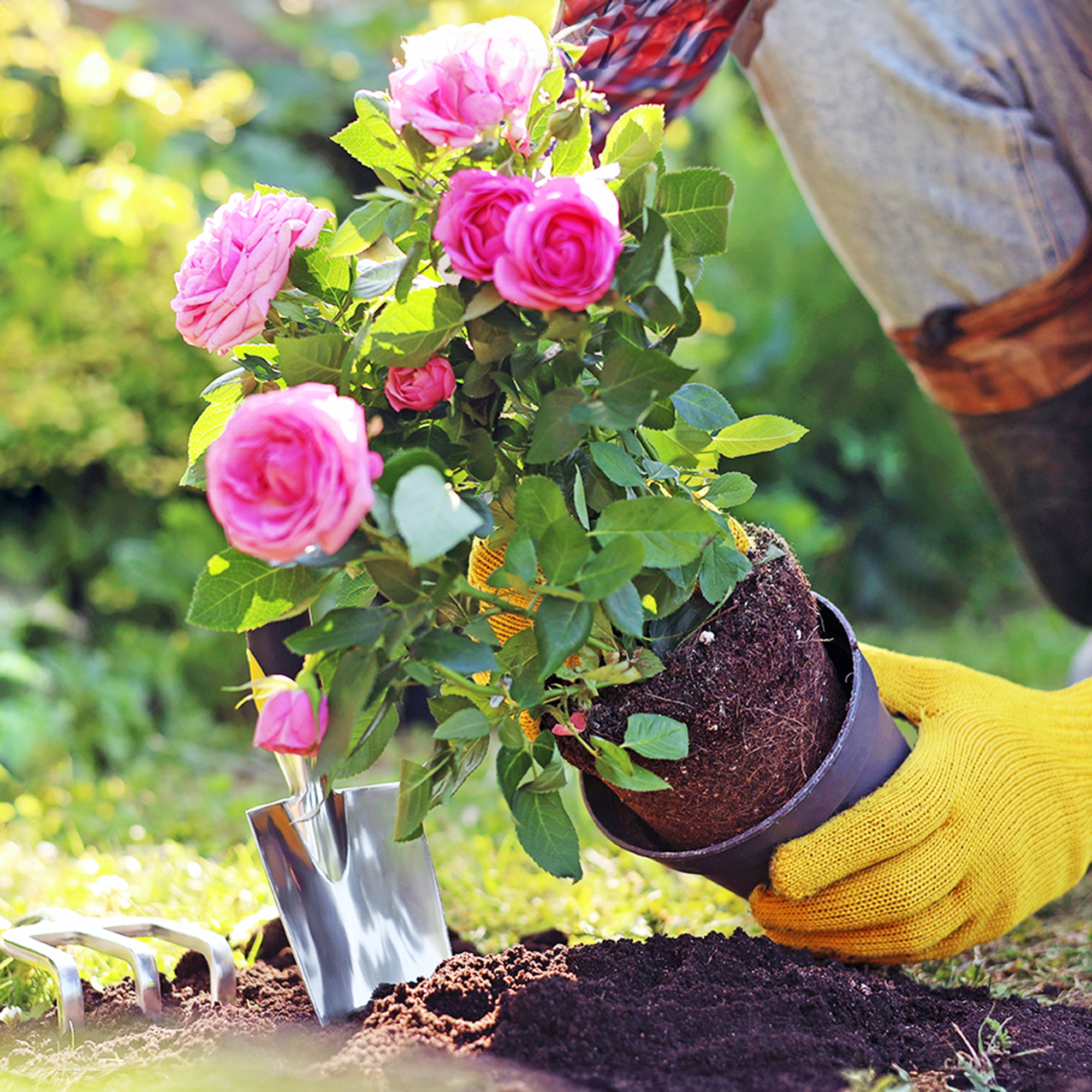 When To Plant Roses: The Best Time For Your Climate And Rose Type
When To Plant Roses: The Best Time For Your Climate And Rose TypePlant your roses at the right time and you will be rewarded with decades of glorious summer flowers – but get it wrong and you'll be crying over dead shrubs.
By Teo Spengler
-
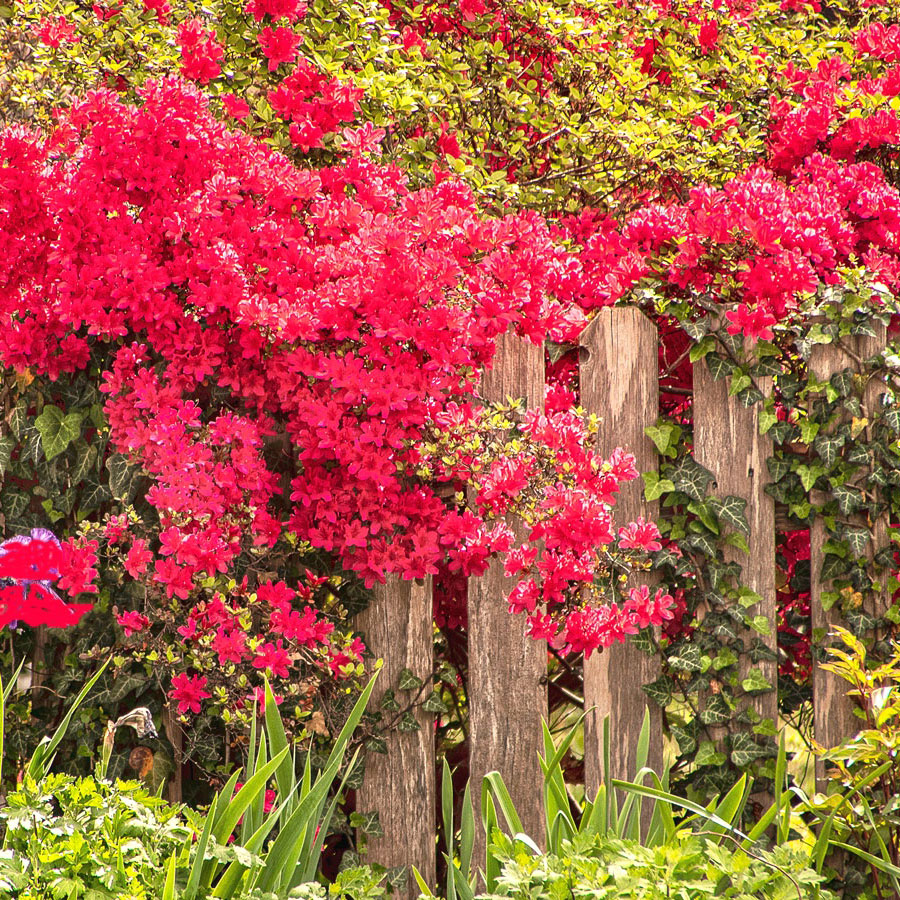 Spectacular Early Blooming Shrubs: 6 Sparkling Spring Flowering Bushes
Spectacular Early Blooming Shrubs: 6 Sparkling Spring Flowering BushesWant to kickstart your gardening year with dazzling spring flowering bushes for beds and borders? These unique early bloomers are sure to help you rise and shine!
By Teo Spengler
-
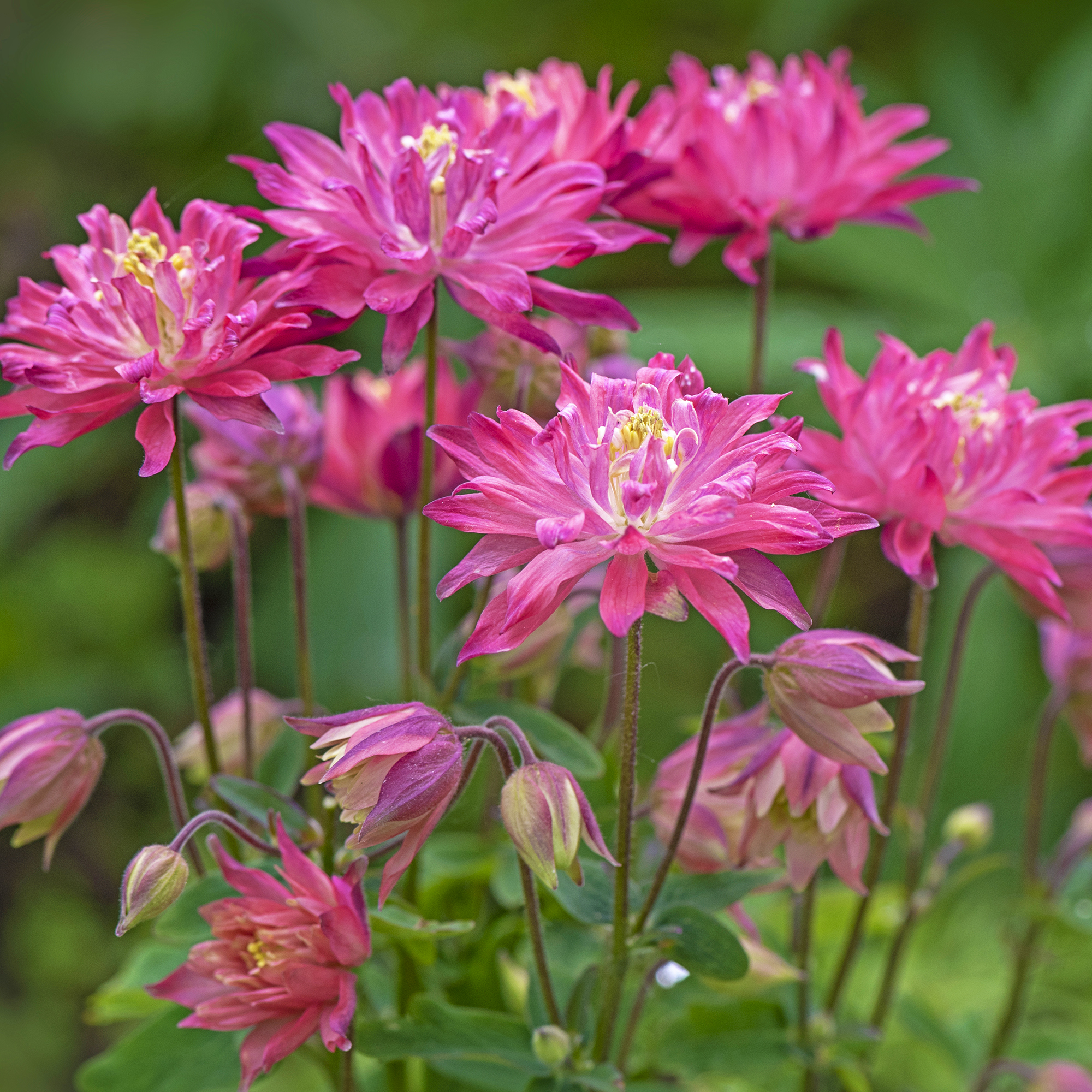 7 Shade-Loving Flowers To Start From Seed Now For A Stunning Summer Garden
7 Shade-Loving Flowers To Start From Seed Now For A Stunning Summer GardenTurn shady spots into vibrant new garden spaces with lovely and illuminating shade-loving flowers.
By Ellen Wells
-
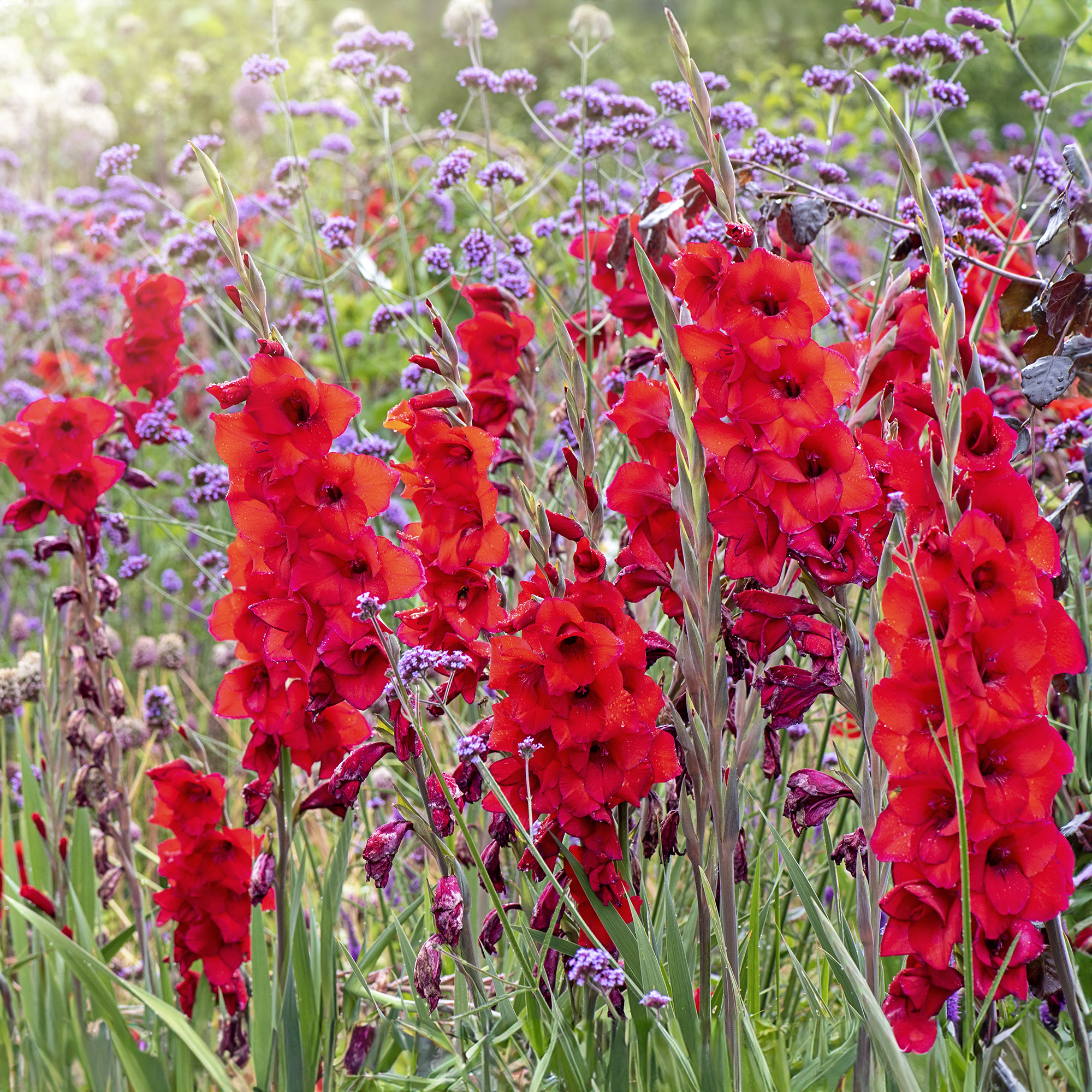 7 Summer-Blooming Bulbs To Plant In Early Spring: Don't Miss Months Of Glorious Flowers!
7 Summer-Blooming Bulbs To Plant In Early Spring: Don't Miss Months Of Glorious Flowers!Get a head start on stunning summer blooms with these easy-to-plant bulbs – act early and you will enjoy vibrant flowers that last for months on end.
By Mary Ellen Ellis
-
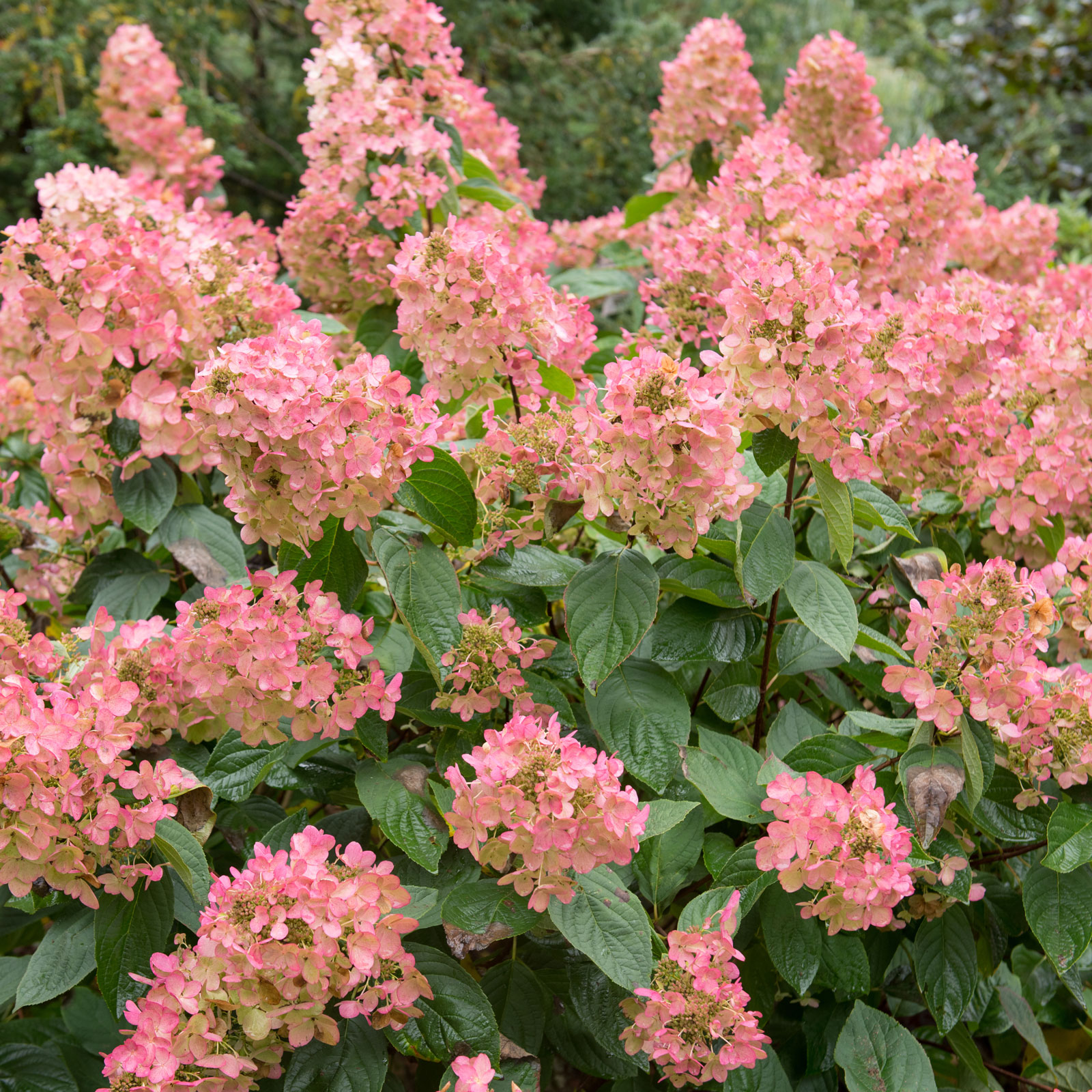 Quick Fire Hydrangea – The Elegant, Easy-Care Shrub Every Gardener Needs In Their Landscape
Quick Fire Hydrangea – The Elegant, Easy-Care Shrub Every Gardener Needs In Their LandscapeIf you’re after an early flowering panicle hydrangea that offers plenty of floral variety, the Quick Fire hydrangea goes big on visual dynamics from early summer to fall
By Tonya Barnett
-
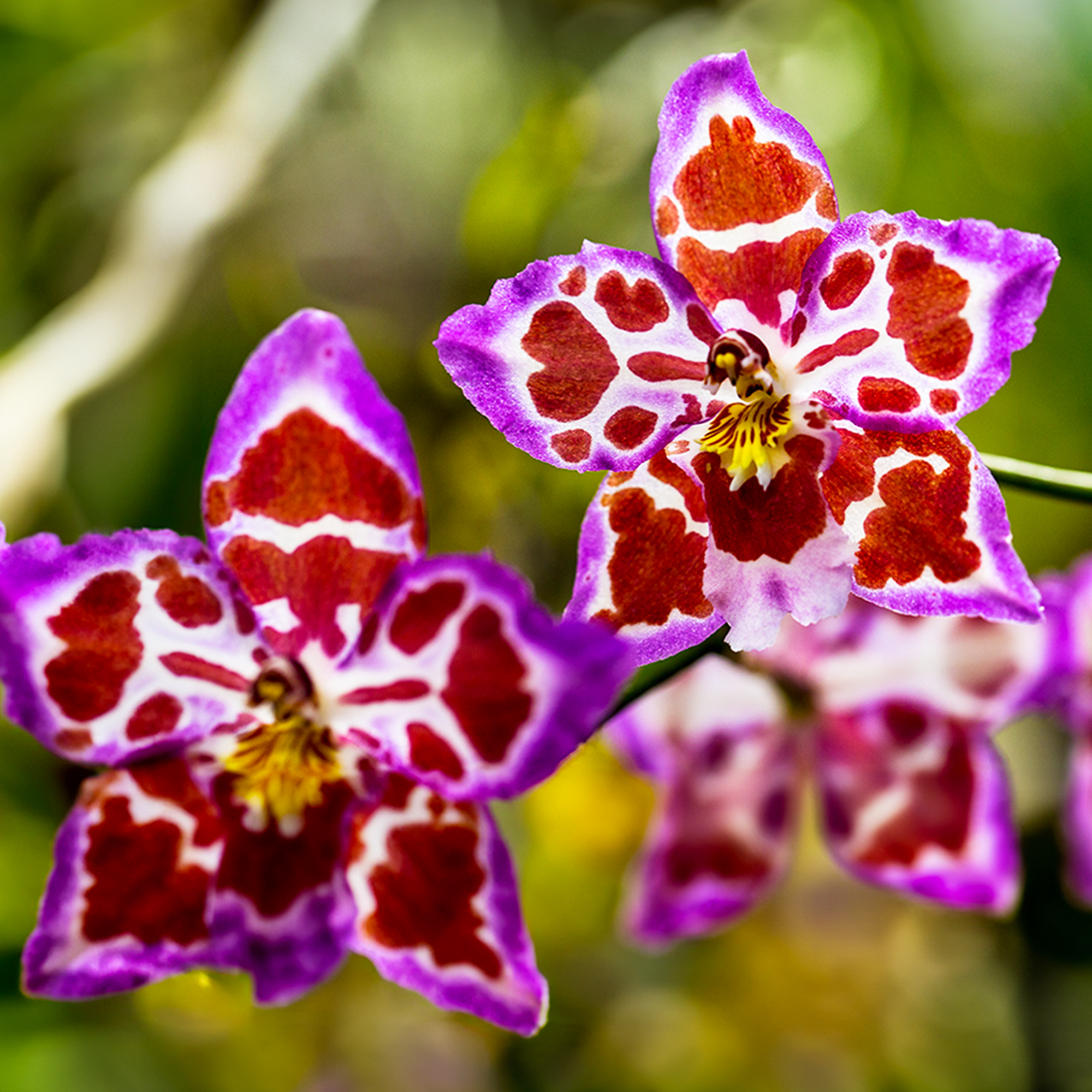 8 Rare Orchids That Make Stunning Houseplants – Some Are Surprisingly Easy To Grow
8 Rare Orchids That Make Stunning Houseplants – Some Are Surprisingly Easy To GrowDiscover unique orchids that will add exotic beauty to your home. Some make easygoing houseplants, while others offer a challenge for more seasoned growers.
By Melanie Griffiths